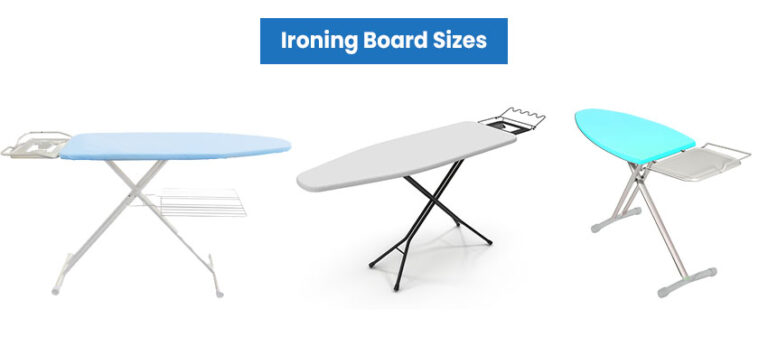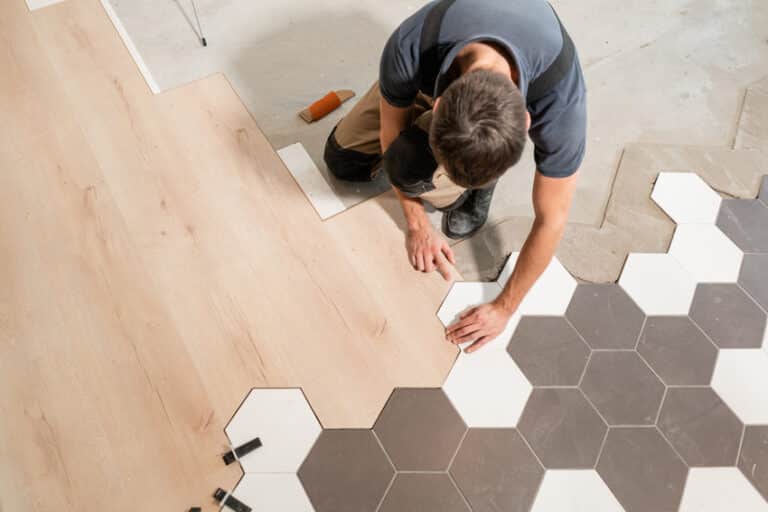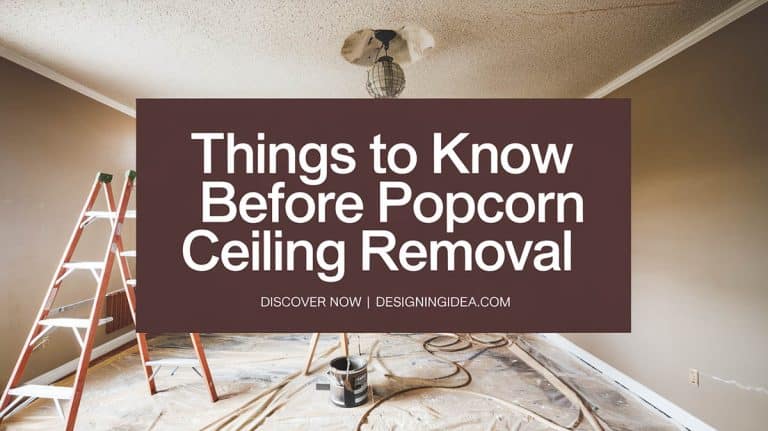Guide to Identifying Types of Roof Damage and Inspection Tips
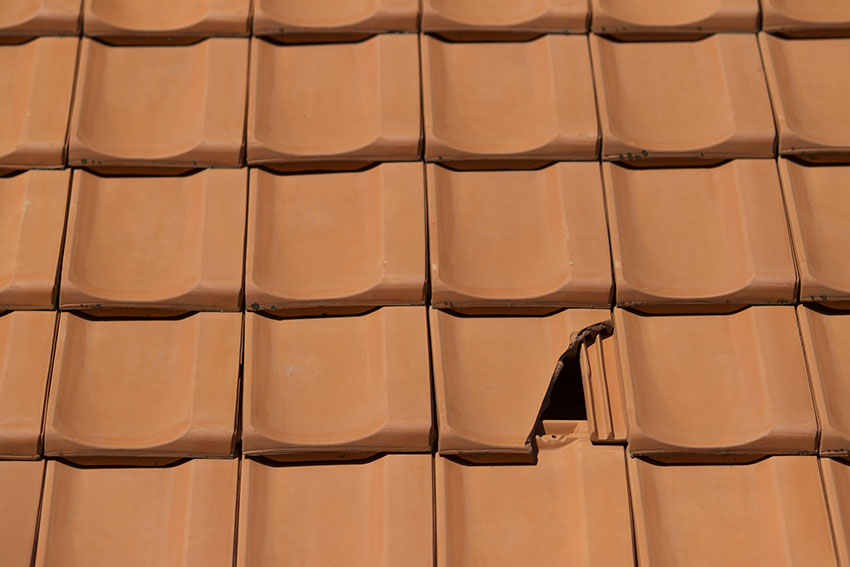
The roof is definitely one of the most important parts of a house. Without it, the rest of the house will be exposed to the elements. However, a roof does so much more than that. It can also minimize energy costs by providing insulation and block heat out or keep it in, depending on the season. Its because of these heavy responsibilities that roof damage should not be taken lightly in any way, shape, or form. Any early signs of roof damage should immediately be addressed straight away before it gets worse. Keeping your roof in its top condition is critical to extending its lifespan and this should be your top priority.
What Is Roof Damage?
Before you can effectively address roof damage, you first need to learn how to identify it in the first place. Roof damage can happen for a bunch of different reasons. It may be because of its exposure to the harsh elements coming from outside, or just be because of the regular wear and tear that comes with high winds, snow, hail, and so on.
Any signs on your roof might be in the form of dark spots, higher energy costs because of the temperature not being kept in the house, missing or uneven shingles, or even faded color. Being able to identify the damage and what type of damage it is in the first place is critical. This is particularly true for when it’s finally time for you to go ahead and get your roof replaced. This will also enable you to maximize your insurance and warranty coverage while you’re at it.
Wind Damage To Roof
Any wind speeds that can run on at 45 mph or faster can cause some serious trouble on your roof. When you get forecasts that winds have been getting this strong, it’s pertinent that you check for any signs of wind damage right away.
Here are some of the visual indicators of a roof that’s been damaged by high and fast winds:
• Tree branches on the rooftop
• Damaged fascia
• Damaged soffit
• Peeling shingles / missing shingles / curling can be signs too
• Any leakages seeping indoors
Hail Damage Roof

The roof is your first line of defense in the event of a hailstorm hitting your area. It would make perfect sense if you check around for any signs of damages in its aftermath. Hailstorms can be extremely destructive. But there are a lot of factors that can affect the amount of severity you have to deal with.
Here are some signs to keep your eyes out for when you’re checking your roof for possible hail storm damage:
• Discernible hail patterns on the roof’s shingles
• Black spots in the shingles
• Exposed roofing felt and missing granules
• Shiny asphalt appearance
• Soft spots on the rooftop
• Random dents and impact marks
• Split shingles with sharp dents on the edges
• Split shingles with orange or brownish discoloration
Storm Damage To the Roof
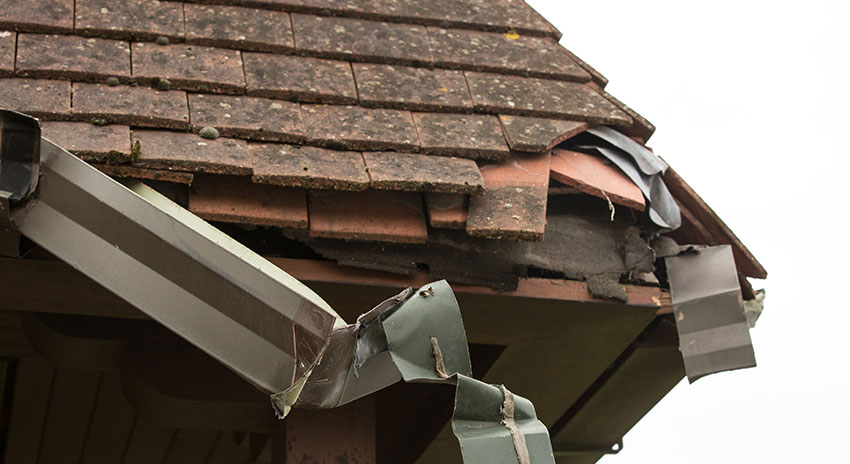
If your roof managed to sustain some sort of storm damage, there isn’t really a lot that you can do about it. It all depends on the location you’re in, as well as the number of storms you get in a year and how severe they can get.
Another thing for you to keep in mind are high winds, storms and tornadoes, thunderstorms, and so on. Right after a storm, you need to make visual assessments right away. Walk around the property and look around. Take a look at what kind of damage it actually sustained.
Storms can be particularly damaging to your roof because along with the precipitation, it will bring hail, debris, or even strong and high winds along with it. Everything that’s out in the open can turn out to be pretty much susceptible to the damage.
If you want to manage things accordingly, you need to make sure that you work on repairs that are fast-acting and immediate. This will prevent it from incurring further damage that could end up getting more and more severe over time.
Here are some visual telltale signs of a storm damaged roof:
• Damaged and missing shingles
• Damaged pipe boots or vents
• Crumbling or damaged chimney
• Sagging wet spots
• Shingle granules that have gone missing
Hurricane Damage To The Roof
Hurricanes are just like high winds, only that they have two to three times the intensity. A hurricane typically has a sustained wind speed of 74 mph or more.
All of the other wind speeds weaker than this can be categorized under high winds or storms. A category one hurricane can have wind speeds of 150 mph or more and can be extremely damaging to your roof.
Here are the signs of hurricane roof damage:
• Shingles that have been ripped all the way off
• This same thing goes for ripped off gutters and roof tiles
• Flying objects
• Tree limbs and other debris on the rooftop
• Other random smaller debris found
Snow Damage To Roof
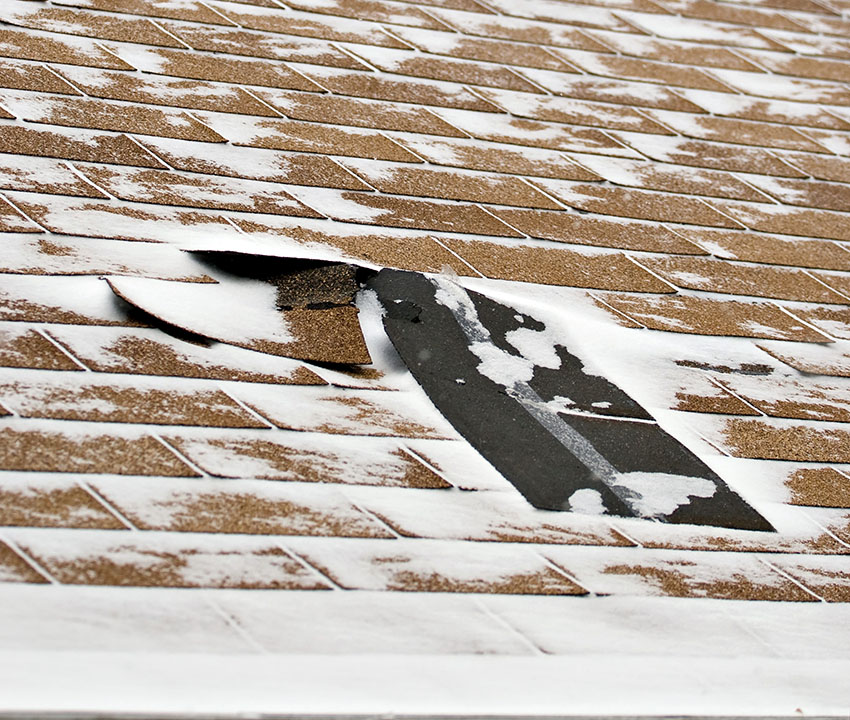
Freezing temperatures can cause long term damage. This is the main reason why winters can turn out to be particularly harsh on your home and most especially on your roof. If left unchecked, an otherwise small home or damage could end up leading to some repairs with crippling and skyrocketing bills and this is something that you would have to deal with at all costs. If you push it aside, it could lead to even bigger problems and even bigger costs.
Here are some things that you need to look out for to know whether your roof has suffered from snow damage or not:
• Any cracked or missing shingle pieces
• Water or moisture pooling in certain spots
• Leakage on the roof or in the attic
• Gutters that have broken down
• Tree limbs or branches that are on the roof
• Loss of granules in the roof shingles
Raccoon Damage To Roof

Raccoon damage on your roof can oftentimes be caused by the arrival of spring. When the snow thaws out of the cold and harsh winter months and warm weather starts to come on, so do the raccoons.
These animals are highly adaptable and they might find your attic and the other similar corners or nooks and crannies in your home to be a great way for them to keep their young in. This season is something that you need to keep an eye out for as this can lead to roof damage if you aren’t careful enough.
Here are some signs to possible roof damage caused by raccoons:
• The areas will mostly be in the attic area
• Torn soffits that are under the eaves of your roof from where they tried to gain entry
• Chewed up or damaged fascia in the roof
• Raccoon droppings found inside the attic area
• Ducts that have been ripped up
• Insulation panels that have been damaged or flattened out
• Chewed up wiring
• Inefficient temperature control brought on by compromised insulation
• Possible fire hazards from all the damaged areas
Mechanical Damage
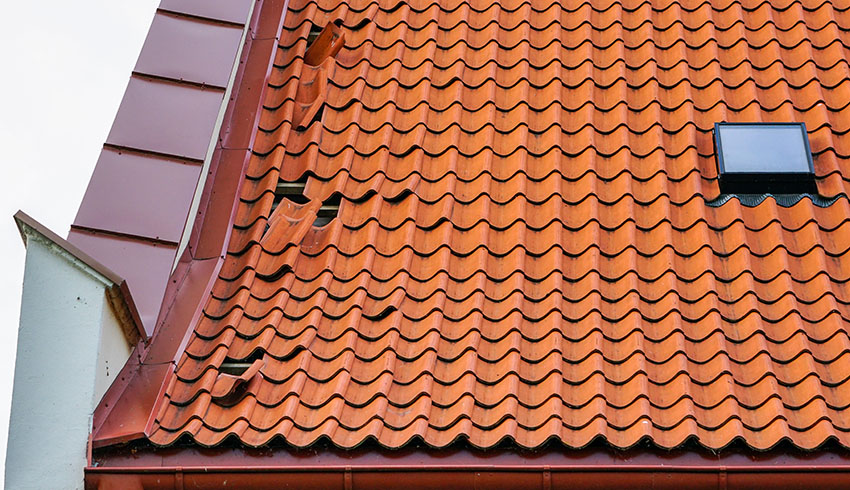
What’s regarded as mechanical damage on a roof entails having parts of the structure that get punctured, penetrated, or damaged and destroyed beyond possible repair. There can be a lot of causes to this. For example, if a roof is installed improperly, it can eventually lead to mechanical damage.
Possible causes of mechanical roof damage:
• Roofing materials that have been unevenly placed
• Roofing materials that have been overlapped incorrectly
• Not enough nails used to secure the components
• Loose nails or screws that have been stuck in the roof
• Damaged materials used during the initial installation
Here are the signs to tell if there’s been mechanical roof damage:
• Damaged caused by the installation of solar panels, air conditioning units, or satellite dishes
• Tool marks left on the asphalt during the installation process
• Asphalt marks caused by getting the granules on the roof pushed in
Water Damage From Leaking Roof

When it comes to getting water damage on a roof, the secret is all on getting ahead of the game. Once it starts leaking, you have to know right out that this is an explicit sign of damage right off the bat. You need to pay attention to the signs of early onset water damage. If nothing is done about this in the early stages, you might end up aggravating the problem.
Here are some real signs of getting heavy roof water damage:
• Water stains or spots on the ceiling area
• Gutters that have become filled with granules
• Wood decking that has either turned spongy or soft
• Walls showing water spots (especially the interior walls of the house)
Falling Tree Damage
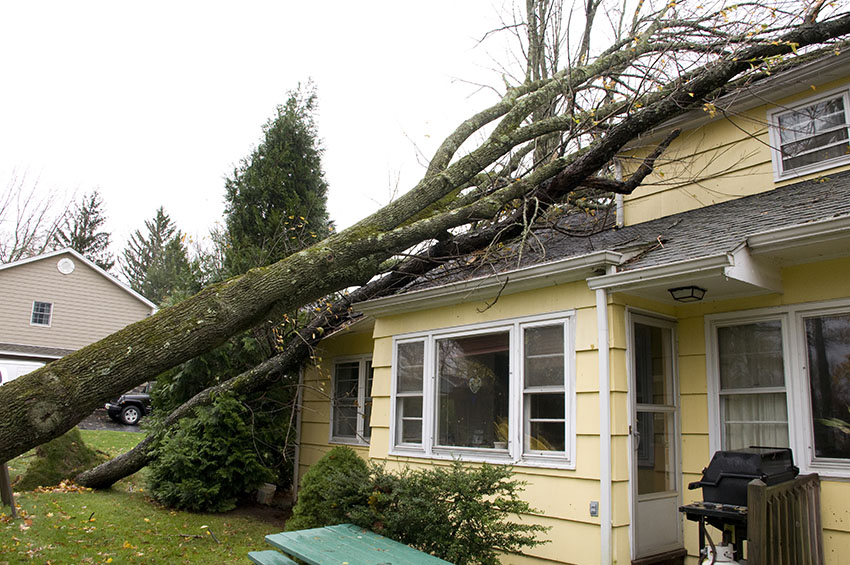
Trees are great to have in and around your property but during the months wherein you might end up getting high winds, storms, or hurricanes, they can be a real nightmare. They can cause some serious damage to your roof. One of the available preemptive measures would be to take them down if they happen to be way too close. However, this isn’t a kind of decision that you should be taking off-handedly.
Before you end up making any decisions whatsoever related to any trees in your property, you need to make sure that you always consult an arborist. An arborist is a tree expert. They take care of trimming trees that overhang over your eaves and rooftops. Visit our tree cabling pros and cons here.
Some tries are protected species and can’t be trimmed down or cut down without some sort of permit as well so getting an arborist onboard is really key to getting everything done right.
Here are some ways on how trees can end up damaging your roof:
• Trees falling on your roof
• Tree limbs and branches that scratch your windows and roof
• Tree overhangs on your rooftop caused by low-hanging tree branches
• Leaves and needles dropped, this can be a particularly bothersome problem with deciduous trees or trees that lose their leaves every fall season
Fire Damage
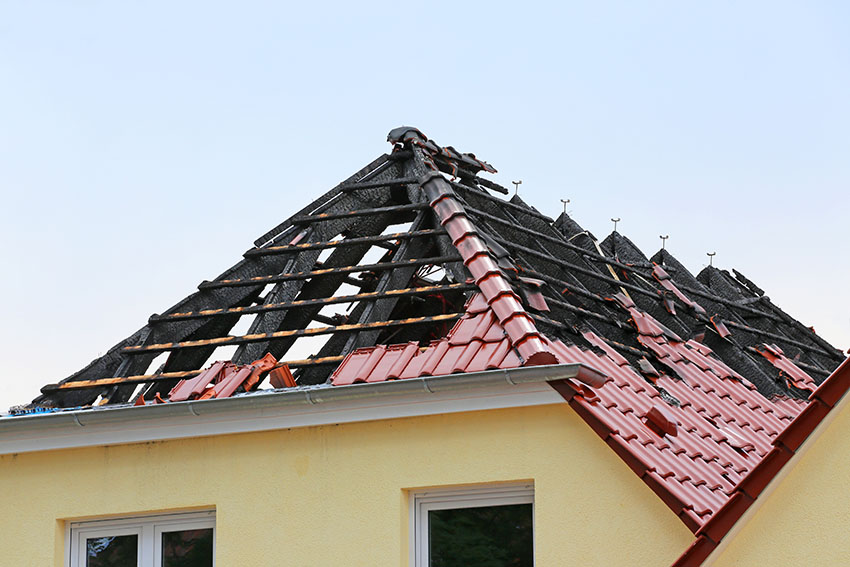
Fire is one of the most devastating elements to your roof and this can occur either naturally or unnaturally. The summer months in particular could make for very hot and dry conditions. This can result to forest fires as everything is hot and dry and literally any organic material left out in the open could be made into kindling if you aren’t careful enough. It all depends on the severity of the fire damage. Minimal ones can be easily replaced whereas more extreme cases might need some type of replacement.
Here are some things that you need to do the moment that you think your roof has sustained some type of fire damage:
• Visually check your rooftop for any signs of fire damage
• Get your roof assessed by a professional
• Figure out your next move based off of their recommendations
What to do to minimize fire damage on your roof:
• Clear out plants and other forms of vegetation that are way too close to your home
• Invest on fireproof or fire resistant materials for your roof
• Constantly keep your rooftop and gutters clear of debris, fallen leaves, and other possibly flammable materials
Roof Damage Inspection
Routine roof checks are essential to ensure that you are constantly on the lookout for small problems that might eventually aggravate and lead to bigger and costlier problems. What may have started out as a minor leak could lead to an eventually soiled and rotting ceiling. A lot of related problems are pretty avoidable if they’re nipped right in the bud and this is why checking your roof periodically is absolutely needed.
Here are a few tips to use when inspecting for different types of roof damage:
• Look for an accumulation of leaves, moss, or even algae on the roof and clear them out
• Look for any signs of misshapen shingles; either curling, buckled, or totally misplaced and get them fixed or replaced
• Get a closer inspection of your overhead areas. Get a ladder up there and take a look at the roof overhangs, dormers, flashings, chimney, and vent pipes. Any corrosion and rotting could spread out so any deterioration needs to be replaced right away.
• Investigate your attic closely. Any signs of rot, moisture, or mold might be the telltale signs of bigger problems so get an up-close of view of what you need to deal with.
What Type Of Damage Is Covered By Insurance
So you’ve got roof insurance. You think your coverage protects you if anything untoward happens. The worst thing that could happen after getting damage is finding out that you don’t actually have coverage under that said policy. This can be very frustrating and disappointing and this might make you start to wonder what type actually has insurance coverage.
Here are some popular types of roof damage covered by insurance:
• Hail damage on your shingles
• Trees or tree branches falling
• Other AOG or Acts-of-God related reasons (usually brought on by extreme weather): strong winds, tornadoes, hail, snowstorms, and the like
Read more about the types of damaged roofing that homeowners insurance covers according to Allstate here.
What Type Of Damage Is Not Covered By Insurance
Alternatively, here are some reasons why your insurance might not end up covering for the damages on your roof:
• Your roof might be 20 years old or older
• It was damaged at your own fault ( minor problems that got aggravated, or problems that you tried to fix yourself but ended up destroying it all the more)
• High end roofing materials that may be too financially risky to cover such as slate, wood shake, and metal (which has the tendency to dent easily when hail hits it)
• The “perils” or causes of the damage aren’t covered under your policy
Here are some causes for roof damage that most insurance companies don’t cover:
• Nuclear explosions or leaks
• Floods
• War
• Government actions
• Earth platelet movements such as but not limited to: earthquakes, sinkholes, mudslides, landslides, and so on
What To Do If You Have Damage

Your roof is the first thing that protects you and the rest of your home from the elements. There isn’t really any way for you to pre-empt when it will get damaged by the harsh weather, or if there is, it can be very rarely done. You need to clearly understand the steps that you need to take in the event of a problem.
Here’s what you need to do if your home’s roof is damaged.
• Give the structure a very thorough damage assessment, document the damages, including descriptions of the discoloration and roofing damage like cracks, flaking, blistering and holes. Note everything down to a T and be as detailed as you possibly can.
• Minimize the damage by doing your best with fixes that you can do on your own. You can tarp it up, replace individual shingles, or do little tasks that help you limit the damage while you’re at it.
• Call your insurance company. It’s always helpful to know if you’re getting your repairs covered by your policy or not.
• Contact a roofing contractor you trust for the repairs.
Roof Insurance Claim
Your insurance may cover certain types of damage but the thing is, it isn’t the most reliable thing. There is no absolute guarantee that your specific type of damage at any given time will be covered by your insurance.
Here’s some information on different types of roof damage insurance claims:
• Partial roof damage – Even if there is only partial damage, if it takes in damages that put its structural integrity at risk, your insurance may cover for the cost of getting your entire roof replaced.
• Roof material matching issues – There will always be the off-chance that your original material is unavailable. If this happens to be the case, your insurer may opt to replace the entire roof altogether.
Should I File A Claim For A Damaged Roof
Yes. When the opportunity presents itself for you to do so, it would be a wise move for you to always do. You have to understand the fact that when it all comes down to it, the cost of you having to fix or replace it out of pocket will always cost so much more than the cost of a high insurance premium.
As an extra note, filing more than twice in the last five years could bring up the cost of your premiums but still, it’s always cheaper compared to having to replace everything yourself.
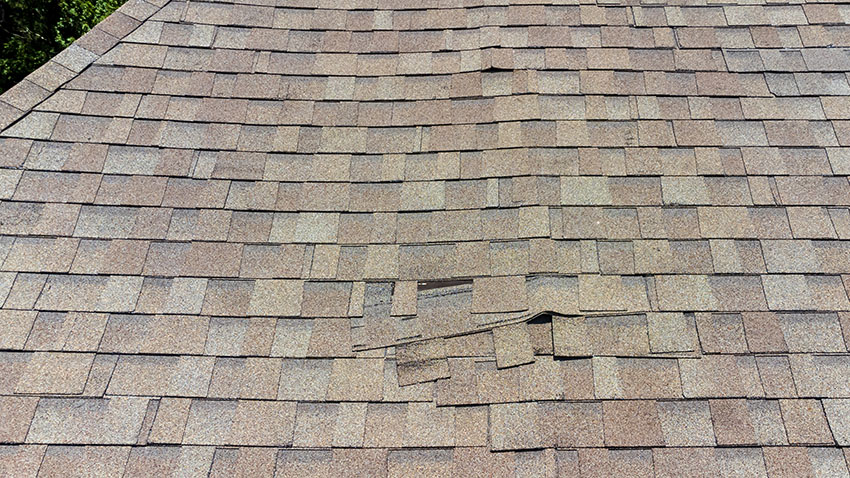
How To File A Claim
Filing an insurance claim sounds complicated but it doesn’t always have to be that way. Filing it correctly can help clear up the process so that you don’t have to spend way too much time waiting for a settlement. Here are a few basic steps:
• Initiate an assessment of your damages.
• Read through your insurance plan and figure out when your coverage entails.
• Have a detailed documentation of your damages. This includes filling out a detailed report including the date and time the damage actually took place. Closeup photos are very helpful with this so take lots of them while you’re at it as well.
• Get in touch with your insurance agent right away. Get acquainted with what the procedures are on how to file a claim and how to follow through on that claim.
• Get yourself a local roofer. You need a professional estimate on how much it will cost you to get it replaced. It needs to be explicitly detailed in that said assessment that basic repairs won’t suffice and that getting the roof replacement is absolutely necessary.
• Get your agent to help you in filing your claim. If the damage is so extensive that you need to temporarily move out of the house and get temporary board and lodging, make sure that this is included in your documentation as well.
• Get an insurance adjuster to facilitate inspections and validate your damaged roofing claim.
• Upon claim approval and once you’ve determined that the quote for the settlement will be enough for you to get your roof damage fixed, hire out a professional roofer of your choice to start the process.
Have you encountered any of the types of roof damage shown here. Let us know your thought or if we left anything out in the comment section below.


